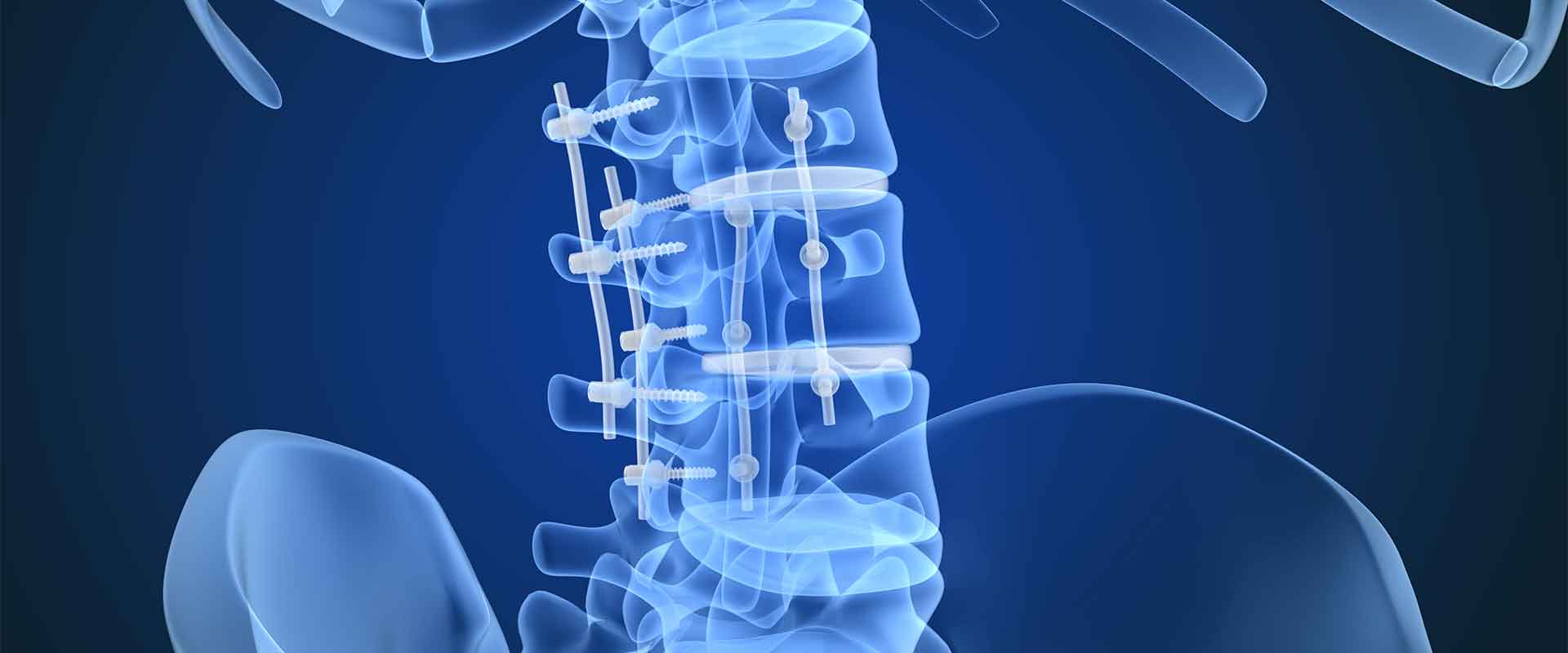PEEK facilitates bone graft procedures
The use of a PEEK cage with a bone graft reduces the likelihood of postoperative complications, is a proven safe option and can enhance osseointegration. When a PEEK implant and bone graft are used together, it’s typically for a spinal fusion procedure. PEEK has been thoroughly tested, studied and utilized for this application, and its efficacy in this role is the reason it is the top biomaterial for spinal implants.
How can PEEK fortify a bone graft?
Bone grafts are required for many applications, including cervical or lumbar fusion. How well the graft fuses with adjacent bone often determines the fusion’s success, and surgical teams have options in improving clinical outcomes. One option is to integrate a PEEK cage with the bone graft, and there are several studies that confirm PEEK’s capability in this application.
Spinal fusion is often indicated when the patient is suffering from degenerative disc disease (DDD). In this instance, fusion stabilizes the spine and alleviates any pressure on the nerves. Part of the existing vertebra will need to be removed to accommodate the graft, but the graft will need time to fuse to neighboring bone. A PEEK cage provides an ideal foundation for the spine to properly fuse and keep the spine stable while the body heals.In the 20 years since its introduction to medicine, PEEK has become a primary material option for vertebral cages. What is it about the polymer that makes it a perfect fit for this procedure?
- Biocompatibility – PEEK has an impressive safety record when used in spinal fusion procedures. In fact, PEEK was first utilized for spinal fusion procedures, and though it is now an important biomaterial in many applications, it is still most often used in the spine. Many studies have looked into PEEK’s biocompatibility, particularly when used as a vertebral cage. Those studies have shown PEEK to be non-cytotoxic, non-genotoxic and non-immunogenic. These properties are well known among medical practitioners, though. The more interesting research, perhaps, has looked into the efficacy of a PEEK cage and bone graft combination. One study, published in the April 2017 edition of Clinical Neurology and Neurosurgery, compared patients who received a PEEK cage and bone graft, versus patients that only received a graft that was stabilized with hardware. The study found several advantages to the PEEK cage and graft combination, including some telling safety benefits. Specifically, the PEEK and bone graft group experienced perioperative complications only about seven percent of the time, while the non-PEEK group experienced complications 29 percent of the time. The use of PEEK also shortened operation time significantly, reducing the strain placed on the patient’s body.
- Radiolucency – Spinal fusion is a delicate process that must be monitored closely following operation. Anything that would interfere with medical imaging is a liability for postoperative management. Fortunately, PEEK is a completely radiolucent biomaterial, and its radiolucency can be modified when additional image contrast is required. PEEK’s imaging radiolucency is one of its signature properties and was a major factor in the decision to originally use it for spinal fusion. Its radiolucency is a feature on X-ray, CT and MRI scans, and is especially important in patients that will require future head or neck surgeries. Should a patient require surgery in the future, the surgical team will have no trouble with preoperative imaging, as PEEK will not scatter the image. Of course, because the polymer produces no imaging artifacts, it will not interfere with the doctor’s ability to monitor the patient’s PEEK cage and bone graft, either. If, however, a level of image contrast is desired, PEEK can be modified with additives, like barium sulfate, to produce the needed contrast. Whatever the surgical team needs in terms of radiolucency or radiopacity, PEEK can provide it.
- Design flexibility – PEEK can be machined without losing its impressive physical properties, as long as it is handled by an experienced fabricator. With the adoption of computer-aided design and machining, PEEK’s machinability opens up many design options during fabrication. There are many PEEK spine cages and spacers on the market due to this design versatility, so surgeons can match their patients with a PEEK cage and bone graft that fits best. Even better, PEEK cages can be designed to facilitate the graft’s fusion. For example, most PEEK cages are fabricated with lateral windows and an extended axial lumen. These ensure maximum surface area for the graft to fuse. PEEK cages can also be fabricated to multiple footprints, heights and lordotic angles, with several combinations of options. This degree of design flexibility is important in creating an implant that matches the patient’s anatomy. Finally, PEEK cages are typically made with pyramidal teeth, which helps the implant resist migration in any direction.
- Modifiability – PEEK is already a primary option for spinal fusion procedures, but engineering firms are looking to improve the polymer further. Most notably, engineers are targeting the polymer’s bioactivity, especially where it concerns osseointegration. PEEK is occasionally too bioinert, which may slow the rate of osseointegration and fusion. This doesn’t figure to be a concern for much longer, though, as there are several implant designs in development or already on the market that address it. This new wave of PEEK cages use several methods to enhance the material’s osseointegration potential, and can promote bone ingrowth. One example is the use of hydroxyapatite and microporous structures to encourage osteoconductivity. This is just one example, and there are many more worth considering. In short, PEEK’s modifiability means engineers will always have room to make the polymer work better in vivo.
A PEEK spinal cage and bone graft is the foundation of a successful spinal fusion procedure. This is because PEEK is the ideal biomaterial. With impressive safety, versatility and material properties, it makes the most sense for spinal fusion procedures.








